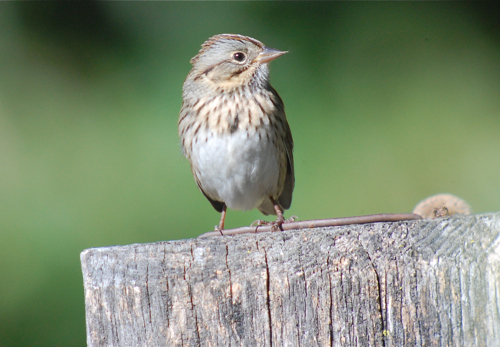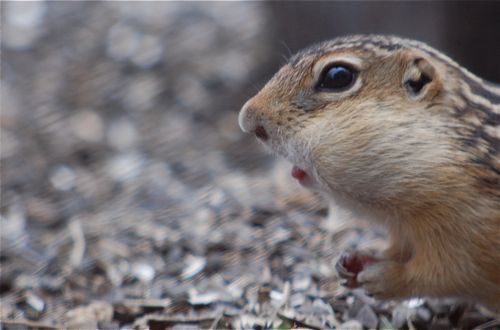
"Pbbbbbbbbbbbt!"
Birdchick Blog

"Pbbbbbbbbbbbt!"
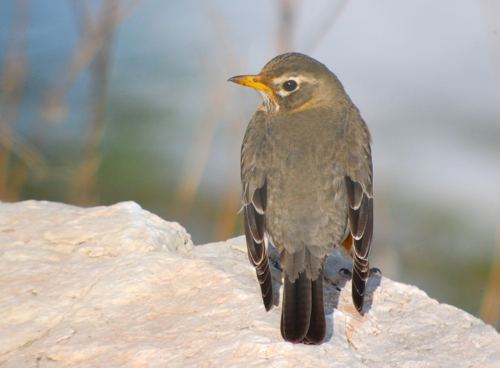 We have turned a corner winter wise up in Minnesota--I was up and at 'em early in the morning this weekend and I heard a robin singing on territory in my neighborhood! I took the above photo of an American robin outside of the National Eagle Center in Wabasha on Sunday (that's roughly 80 miles south of me). I was stationed at a binocular booth all day and it was a great vantage point for watching the birds use the Mississippi River as a major highway. Saturday was bright and sunny and my biggest surprise was seeing a meadowlark zoom right overhead.
We have turned a corner winter wise up in Minnesota--I was up and at 'em early in the morning this weekend and I heard a robin singing on territory in my neighborhood! I took the above photo of an American robin outside of the National Eagle Center in Wabasha on Sunday (that's roughly 80 miles south of me). I was stationed at a binocular booth all day and it was a great vantage point for watching the birds use the Mississippi River as a major highway. Saturday was bright and sunny and my biggest surprise was seeing a meadowlark zoom right overhead.
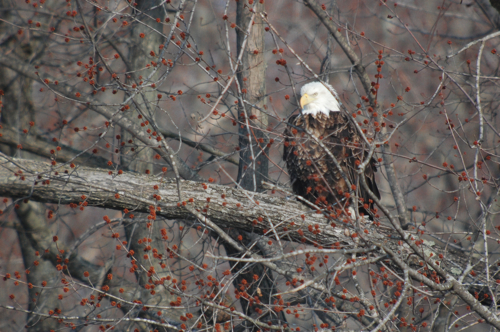
I love this photo of a bald eagle tucked behind some branches bursting with red buds about to pop. That's spring! It was crazy how migration really turned a corner this weekend. The previous weekend I struggled to see a red-winged blackbird and I passed clouds and clouds of them on my way down.
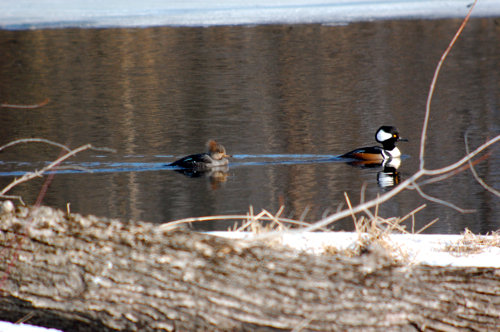
Both days, on my drive down I saw several groups of hooded mergansers involved in courtship display in the backwaters of the Mississippi. Speaking of hooded mergansers, have you seen the shots Picus Blog just posted--amazing!
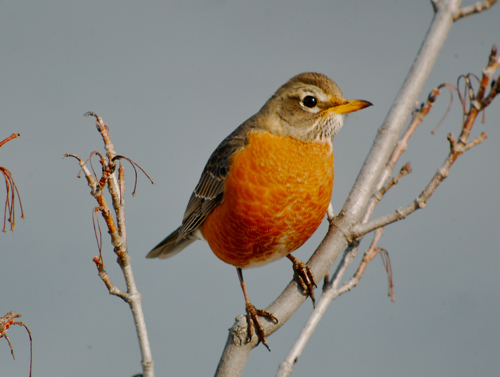
While Saturday was beautiful and offered great views of spring birds (like the above robin), Sunday was cooler and drizzly which eventually turned to fog and was utter crap for getting photos. You could still see migration working through the skies until the fog got so thick that we couldn't see across the river. We would scan the skies with the scopes and watch strings and strings of tundra swans heading north as well as a whole host of other ducks like ring-necks, scaup and common mergansers. I even got my first of year pelicans.
I'll be at the National Eagle Center one more time this month. Next Sunday, I'll do a digiscoping workshop on how to take photos and video of birds and wildlife using a binoculars or spotting scope with a digital camera. I think it starts at 11am. I'll also have my pro cleaning kit if you would like me to tidy up your optics for you too.
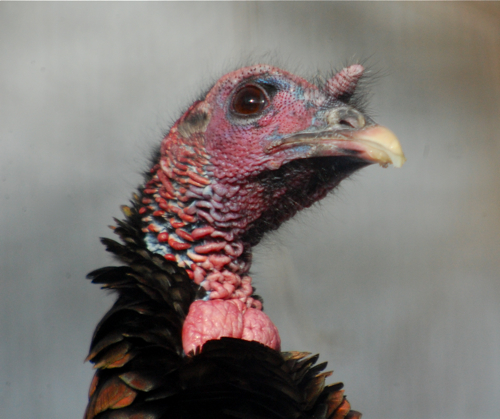
 I know they are non native and cause problems, but I do love the look of starlings in winter plumage. This is a bird in my neighborhood resting after a good gorge on hackberries.
I know they are non native and cause problems, but I do love the look of starlings in winter plumage. This is a bird in my neighborhood resting after a good gorge on hackberries.
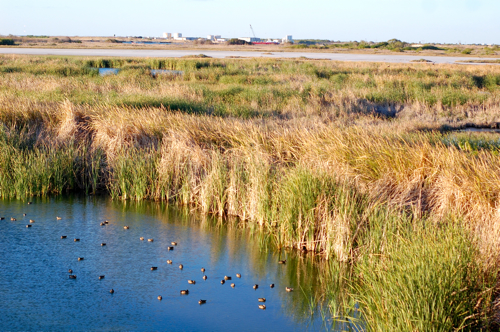
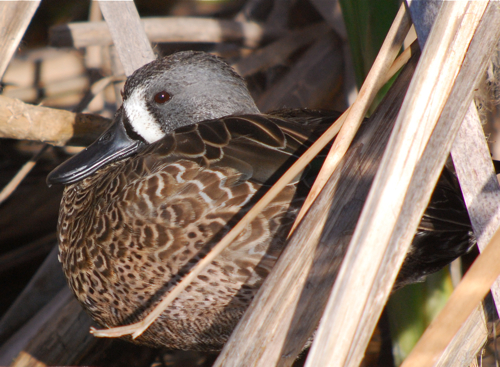
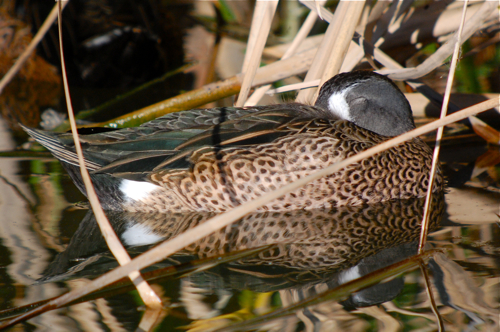
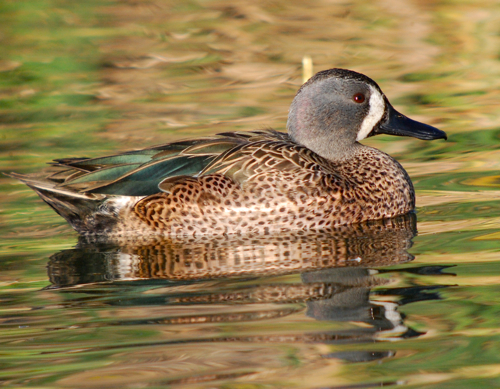
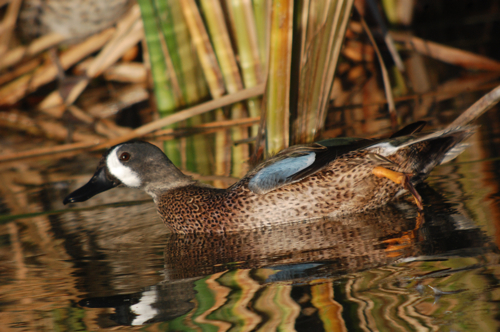

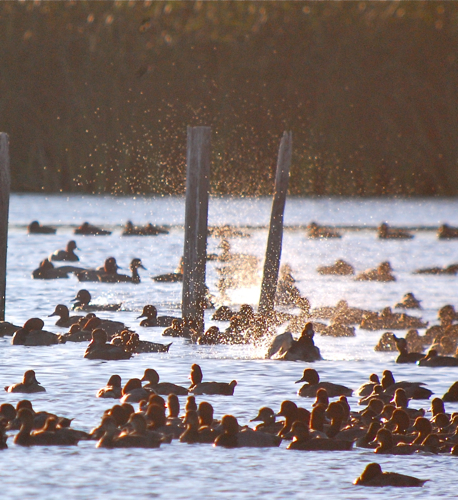 These are some redheads bathing and splashing against the sunset at Leonabelle Turnbull Birding Center in Port Aransas, TX. I took this particular photo through my spotting scope. The redheads were not at the best sun angle, but with the splashing, I thought it was an arty shot.
These are some redheads bathing and splashing against the sunset at Leonabelle Turnbull Birding Center in Port Aransas, TX. I took this particular photo through my spotting scope. The redheads were not at the best sun angle, but with the splashing, I thought it was an arty shot.

It was a huge flock of birds. At first glance I would have guessed 1500, but in the scope, the redheads just kept going. We estimated that there were close to 4000 redheads were in this raft. I half wondered if any of these birds had been counted on our aerial waterfowl surveys on the Upper Mississippi River.
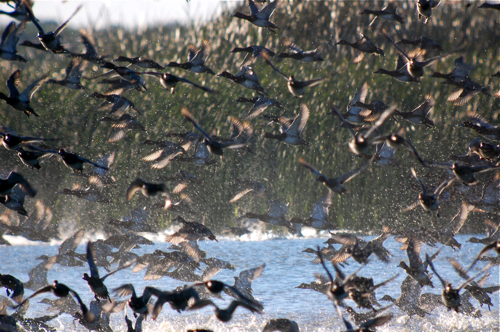
Suddenly, the flock of redheads took off.
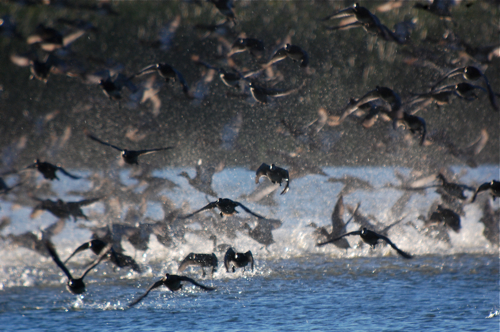
Something must have spooked them. There are warning signs about alligators around the boardwalk, so my guess is that an alligator went for a duck.
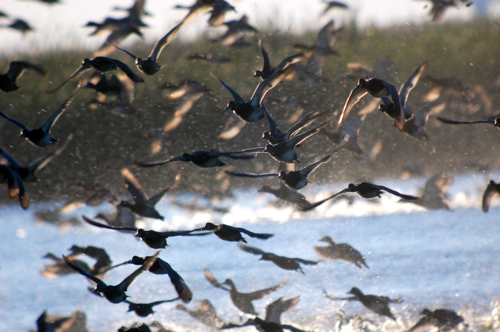
One of the benefits of being one for 4000 is that you are less likely to be the one nailed by a gator.
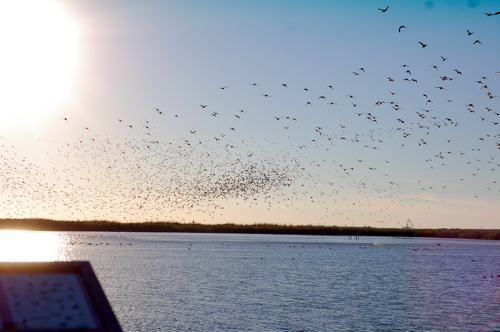
Once the flock what in the air, you could really get a sense of the size and agree that yeah, there must be close to 4000 birds there.

I couldn't help but notice other species mixed in with the flock and making mental notes. In the above photo there are a couple of scaup mixed in--can you pick them out? I still crack up that even though I was on vacation from my waterfowl surveys, I'm still attracted to ducks in large numbers.
My non birding New Orleans fun is finished and I'm back in Texas to enjoy some time with friends at the Rio Grande Valley Bird Festival.
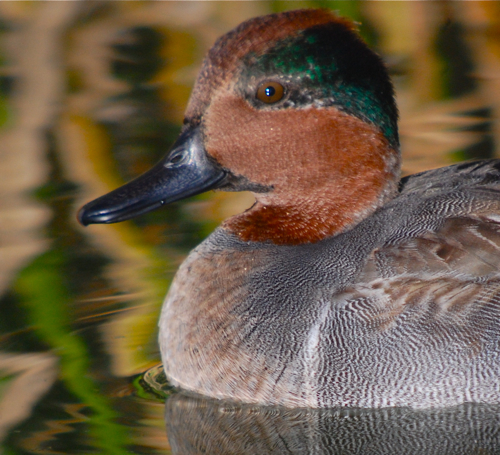
I had a brief love affair with a green-winged teal. I don't normally get the above view of a teal. Generally, they are fleeing from our plane when we count them. So to see a green-winged teal chilling in the evening sun was quite the treat.
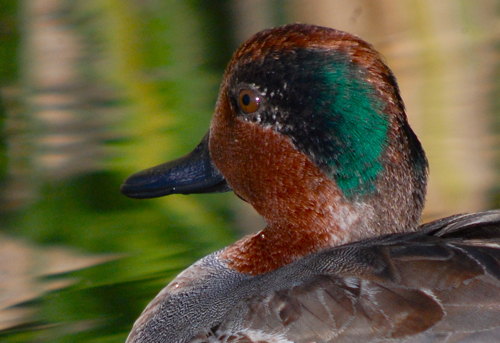
At first glance, they may appear brown, but their heads rival any mallards with the rich rusty read accented by a swath of iridescent green behind the eye--like eye shadow gone wild. This is the smallest dabbling duck in North America, so besides the color, they are quite cute. They will forage for aquatic insects on the water's surface or dip below for vegetation.
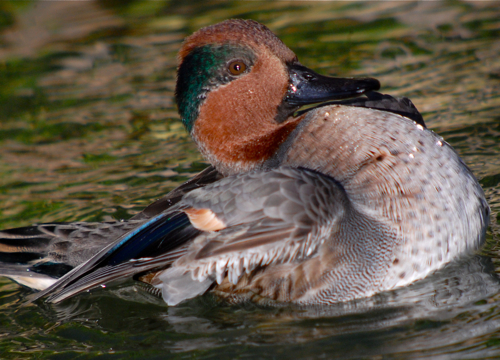
This bird went into full on bathing mode while I was digiscoping it. I think I will let the photos speak for themselves.
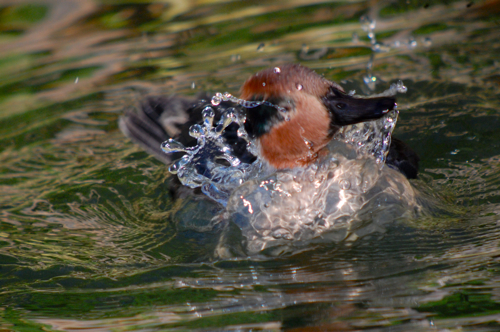
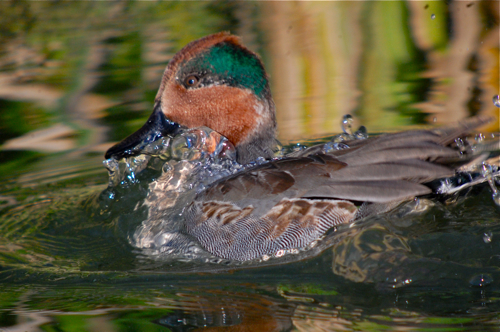
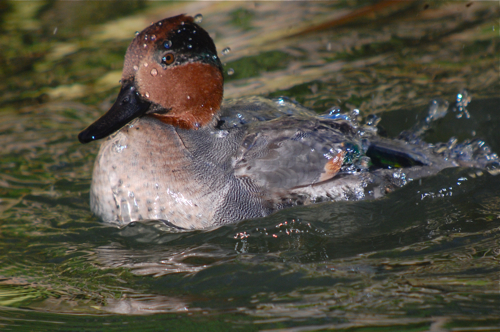
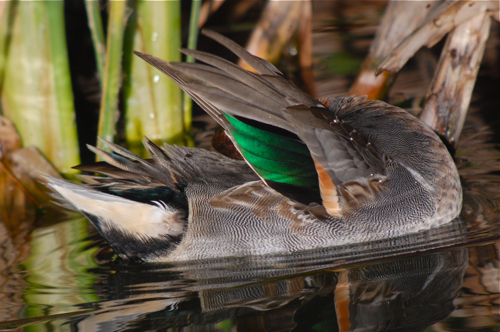
After a good bathe, a nice preen is in order. I love this shot, you can see the green patch from where the teal gets its name.
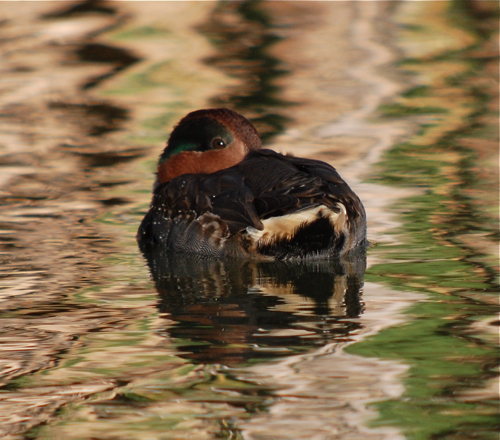
And then a nap.
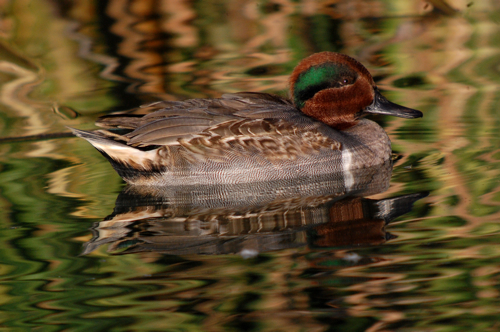
I have my first post up over at 10,000 Birds.

When I was at Lake Vadnais last week looking for the long-tailed-duck, I took advantage of the close up trumpeter swans to get some swan shots. Note the swan in the back. I was watching that one and noticed it was a wee bit smaller than the two in front. After the preening, the swans started dipping for vegetation.

The swan in back came closer to the other two and side by side, it was noticeably smaller (the smaller swan is the one on the right). Was this a female? In swans, females are smaller than males. Or...was this a tundra swan mixed in with the trumpeter swans?

They both popped up at the same time and look at that--the smaller bird has a touch of yellow on its beak--it was a tundra swan! Tundra swans nest in the tundra, not in Minnesota. They are in the midst of their migration and this time of year, hundreds can be seen flying over on their way to the coasts for the winter. Trumpeter swans nest in Minnesota and many will end up staying here for the winter, wherever they can find open water, many in Monticello.

It was fun to have an opportunity to really get a close look at the difference between the two swan beaks. Above is the trumpeter swan (with a little white feather stuck on the beak)--all black, no yellow. It's also a little bit of a bigger beak compared (up close) to a tundra swan. It's hard to tell them apart at a distance. If you can hear the call it's a no brainer. Here is a trumpeter swan call (like a kid playing a toy trumpet). But if your driving and it's during migration and you see a flock of swans fly over--how can you tell. I've heard some say that if you see a huge flock of 50 or more birds high up, chances are good it's a flock of tundra swans. If it's a small family group of 3 - 5 flying low, it's probably trumpeter swans.

Here's an up close of the tundra swan beak--with the little bit of yellow right in front of the eye. This is a tundra swan call. This bird would do a periodic bark, but I'm used to hearing a whole huge flock with they migrate, so it sounded strange.

Since I saw my first tundra swan in the Twin Cities last week, I figured I'd get to see them on my surveys on Monday and sure enough, there are tundra swans gathering on the Mississippi River. We found some on Pools 4 - 7. I'm sure there are a few trumpeters mixed in, but not really an easy way to separate them from the mostly tundras. If you have never seen the tundra swan migration in this area, you should really check it out. You can get info from Alma, Wisconsin but a great spot to view them for the next two weeks will be at the viewing platform in Brownsville, MN. You should get some other species too. This week we had lots of canvasbacks, buffleheads and ring-necked ducks--just to name a few.

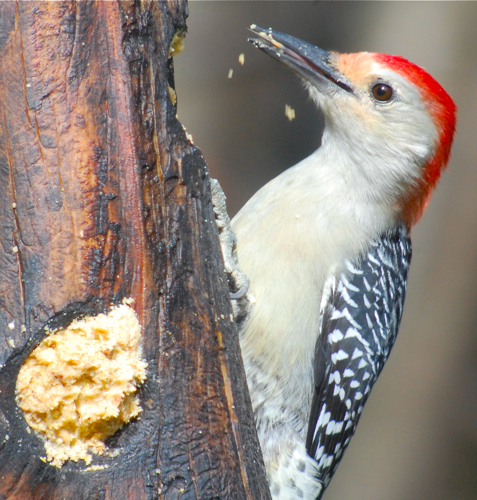 This red-belly is a messy eater--check it out, you can even make out the hard tip of its pointy tongue!
This red-belly is a messy eater--check it out, you can even make out the hard tip of its pointy tongue!
How are your digiscoping skills? If you like to do it as much as I do, keep an eye on the Swarovski Optik Facebook page for opportunities to put your photos to use. Their Digiscoper of Year Contest still has time for you to enter. The contest ends at the end of this month. Also, Clay and I are going to do another Digiduel next week and we are looking for teammates. You can partner with me or Clay! Check Facebook for details.
